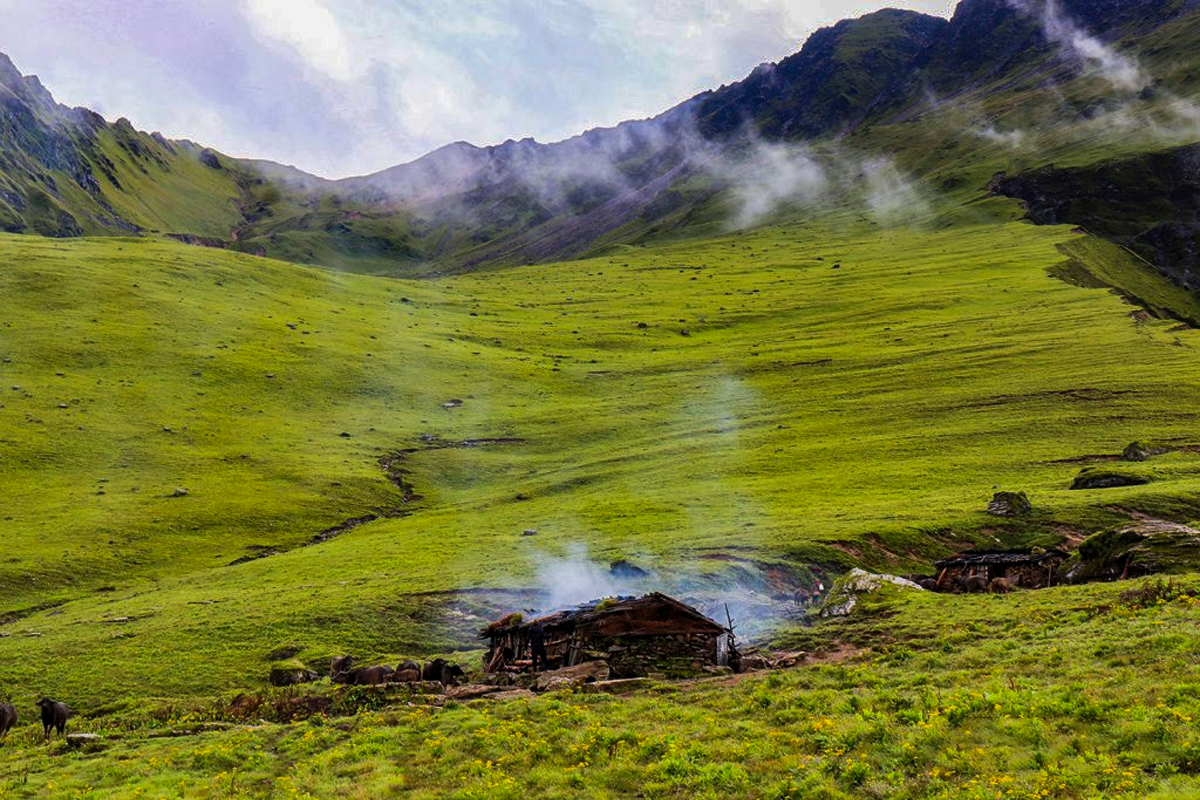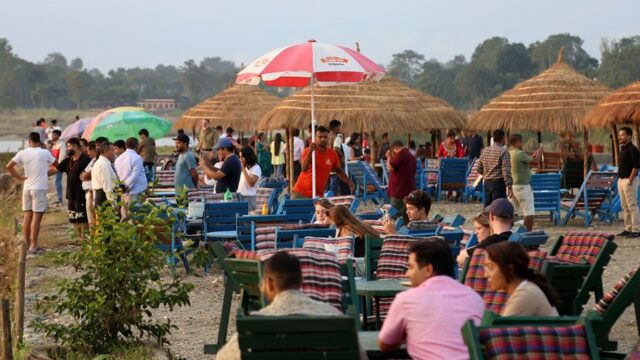The Dhorpatan Hunting Reserve, sprawling across 1,325 square kilometers in the eastern districts of Rukum, Baglung, and Myagdi, has transformed into a vibrant hub of natural beauty as colorful wildflowers bloom across its grasslands and slopes. The serene environment, characterized by the sight of grazing livestock, majestic mountain backdrops, shifting clouds, sunlight, and occasional rain showers, has become a haven for nature enthusiasts and tourists.
Jeewan Kumar Pun, Secretary of the Dhorpatan Tourism Promotion and Development Organization, highlighted that the lush vegetation and nutritious forage available in the reserve are attracting more tourists. “While other regions experience an off-season from Ashad to Bhadau (June to September), Dhorpatan is in its peak season,” Pun stated. He noted that the once locally recognized beauty of Dhorpatan’s flora has now gained prominence in the field of eco-tourism.
The increasing number of tourists is attributed to enhanced accessibility through improved roads, transportation, accommodation, and communication facilities, coupled with the appeal of sharing photographs and videos of the blooming landscape on social media. Ram Bahadur Gharte Magar, an operator of a community homestay in Dhorpatan, reported a steady flow of visitors, particularly on Fridays, Saturdays, and public holidays.
Nabin Khatri from Kathmandu, who recently explored Dhorpatan for five days, praised the area as an ideal destination not just for hunting tourism but also for nature lovers. “The colorful flowers, constantly changing weather, and cool breezes make time fly by unnoticed,” Khatri said, referring to the area’s elevation of 4,010 meters above sea level. He noted that the monsoon season enhances Dhorpatan’s appeal with its diverse floral displays.
According to Mandip Pangeni, Conservation Officer at Dhorpatan, the flowering season lasts from Shrawan (July) to the first week of Ashwin (October). Pangeni added that they are in the process of cataloging and identifying the various flower species found in the reserve. Conservation Officer Pashupati Adhikari has already collected images and local names of 13 different flower species, such as Dahi Theki, Rakshas, Bisauri, and Boksi, and plans to identify their scientific names with the help of experts.
To preserve the blooming flowers, the reserve has prohibited the use of tractors to transport animal dung from grazing areas. Farmers from Myagdi, Baglung, and eastern Rukum have brought their livestock to graze on the nutritious grasses of Dhorpatan’s meadows. According to farmer Dan Bahadur Kayat, this has led to healthier, fatter animals and increased milk and meat production.
Dhorpatan is steadily evolving into a year-round tourist destination with seasonal attractions. According to Ranger Sagar Subedi, 581 Nepalese tourists visited the reserve between July 1 and 28, 2021. During the fiscal year 2080/81 (2023), the reserve collected NPR 1,933,700 in revenue from eco-tourism. The total revenue for the fiscal year 2080/81 was NPR 47,102,628, compared to NPR 34,800,000 in the previous fiscal year.
At the entry point in Deurali, visitors are required to register and pay fees at the reserve and Nepal Army posts. Nepalese visitors pay NPR 100 per person, tourists from SAARC countries NPR 1,500, and those from other countries NPR 3,000. Senior Conservation Officer Birendra Prasad Kandel attributed the increase in revenue to improved hunting opportunities and better management, which has contributed to the growing number of visitors and revenue generation.






